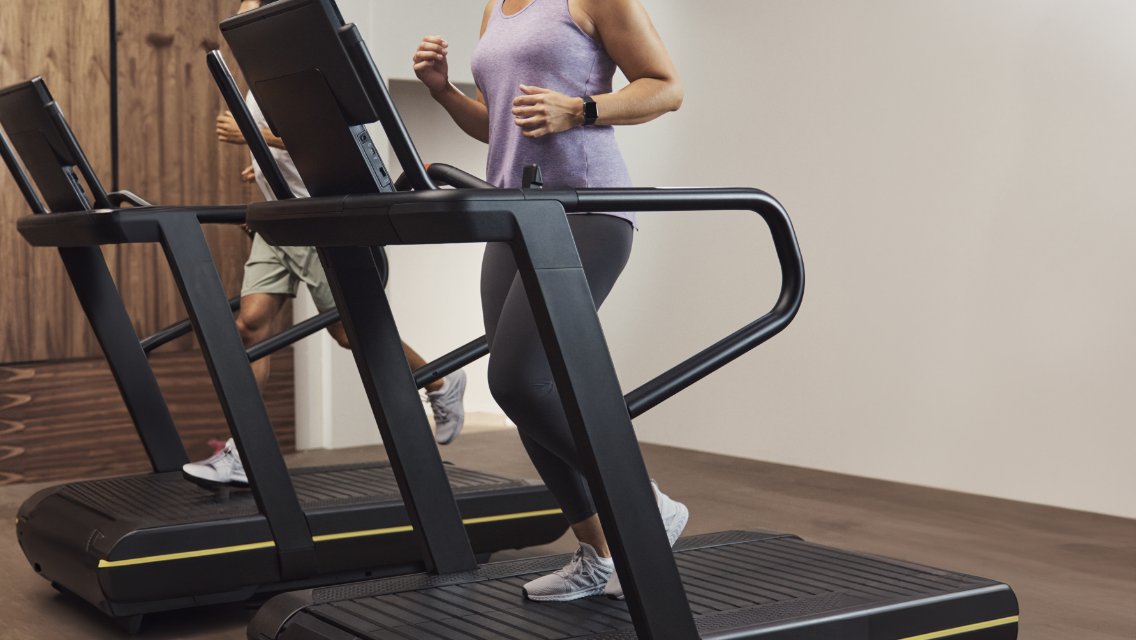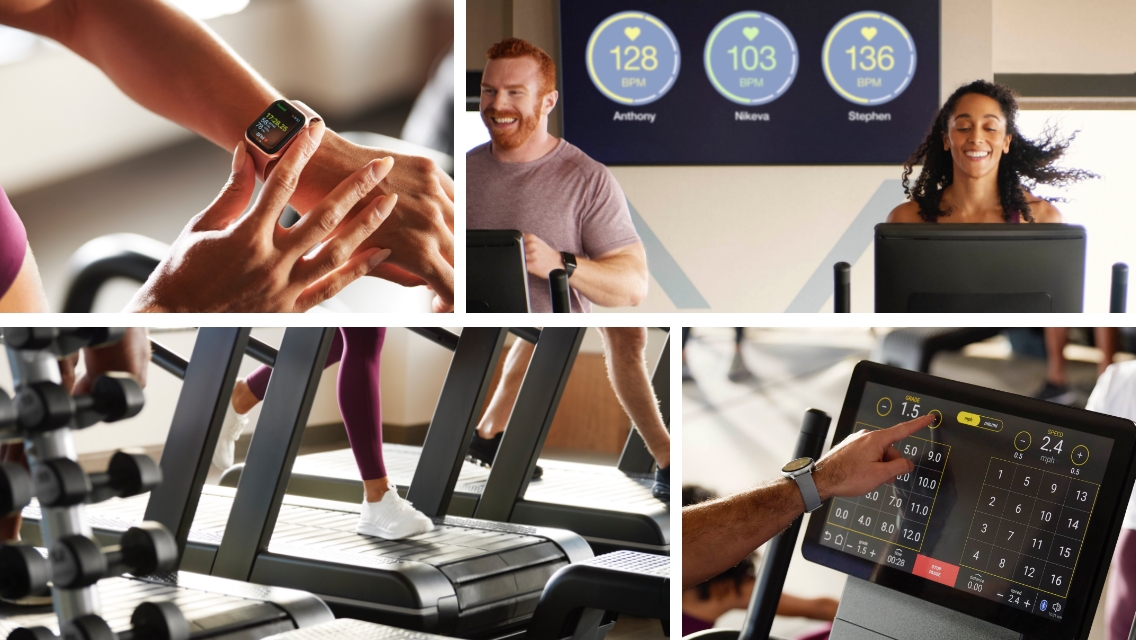When it comes to seeing results and fat loss from your training plan, it’s often assumed that the harder you work, the faster you’ll see desired change. Yet, it’s this exact mindset that can often drive an unintended and opposite outcome.
It might sound counterintuitive, but consider this:
The body’s number one goal is survival, and this reigns as the metabolic priority above common training goals like improved workout performance and a leaner body composition.
Whether it’s due to an aggressive calorie deficit or a too-intense training program, metabolism will slow down when it senses a perceived and sustained threat to your energy balance. It reads these situations as either “not enough calories are available” or as “a high calorie burn and activity level is required,” not realizing that in today’s modern world, the reduced calories or increased exercise are controllable and intentional. As a result, several hormonal changes to conserve resources are activated.
The outcome? Stubborn body fat, despite high levels of activity.
And if you’re happy with your body composition and thinking “I don’t need to burn fat,” keep in mind that being an effective fat burner goes beyond aesthetics: it makes it easier to maintain a leaner body-fat percentage, helps keep your energy levels more stable, reduces cravings for sugar and starches, and boosts overall stamina and endurance.
One of the secrets to burning fat effectively without stressing your system is to build your aerobic base.
What is an aerobic base?
Your aerobic base is an exercise intensity level and heart rate at which you are most efficient at burning fat. Your specific aerobic base heart rate is unique to you, and it can be modified with the right cardio plan. At Life Time, we find it helpful to categorize exercise intensities into a five-zone system, with Zone 1 being the easiest and Zone 5 being the most intense. Aerobic base, or AB, is the point in between Zones 1 and 2.
But first, let’s take a step back to understand how intensity works in terms of calories and fat burn. Generally, the more intensely you exercise, the more calories you burn per minute.
However, as that intensity increases, the percentage of those calories you’re burning from fat goes down, and the percentage you burn from carbohydrates goes up. At the highest intensity levels, you’re burning exclusively calories from carbohydrate. So, while exercise sessions with all-out effort have their time and place in a conditioning program, exercising at a high intensity for every workout will do little for your body composition.
Instead, it will train your glycogen, or stored carbohydrate in your liver and muscles, to grow so that you become really good at that particular exercise — even with the same amount of body fat. (And note: The amount of glycogen you have does little to impact what you see in the mirror.)
How do I figure out my aerobic base?
The gold-standard method is to do an Active Metabolic Assessment, which is an objective test that captures oxygen and carbon dioxide exchange while exercising to precisely pinpoint your heart-rate zones, aerobic base, and several other helpful metrics, such as anaerobic threshold and VO2 max.
If you don’t have access or aren’t yet ready to do an Active Metabolic Assessment, this article provides silver and bronze methods for estimating a value called anaerobic threshold, or AT. Your AB is approximately 70 percent of your AT: “The Active Metabolic Assessment: Discover Your Heart Rate Zones”
From a subjective standpoint, aerobic-base activity should feel fairly comfortable. You should be able to hold a conversation and speak in phrases. If you’re telling a long-winded story without having to catch your breath at all, you’re probably not going hard enough. But if you can only speak in one-word sentences, you’re probably going too hard.
How do I build my aerobic base?
The higher you can get your aerobic base (in terms of heart rate), the more total calories you’ll burn from stored fat at various exercise workloads. In addition to burning fat, aerobic base is an intensity sweet spot for effective endurance training and for recovery workouts.
However, you need to send your body a consistent message with your activity and exercise choices to signal your aerobic base to increase.
Here’s how:
1. Use a heart-rate monitor.
One of the easiest ways to quantify your exercise intensity is to objectively track your heart rate.
By doing so, you can confirm whether or not you’re actually in the right beats-per-minute range for a given session to be considered aerobic-base work. Plus, most devices will store your workout history and provide you with a view of your total time spent in various heart-rate zones to better round out your overall conditioning program.
2. Spend 80 percent of your cardio there.
As discussed, aerobic base is the spot between Zones 1 and 2. By purposefully spending more time at these intensities, your metabolism will adapt and build up your aerobic base — typically over a span of two to three months.
Start by looking at your recent workout history or proposed plan. Decide how much dedicated cardio training you can realistically commit to, both in terms of number of sessions and duration per session. Add up the total minutes of cardio exercise you’ll be doing in a given week, and then plan for 80 percent of those minutes to be spent in Zone 1 and Zone 2.
Ideally, you’ll want to work up to at least three days per week of Zone 1 and Zone 2 training, with a minimum of 150 minutes per week — and with an eventual goal of 300 minutes.
I’ve found that for my clients, those who are avid exercisers are surprised that they often need to scale back on what they’ve been doing to see better results. And at least initially, the reduced intensity can feel boring for those who are used to training intensely most of the time.
If this is you, remember that by building your aerobic base, you’ll be able to eventually work out harder while still burning fat effectively, which will alleviate any boredom for the long-term.
3. Plan for longer-duration sessions.
In contrast with high-intensity work that typically lasts 15 to 20 minutes, workouts that are in Zones 1 and 2 and build your aerobic base generally are longer workouts. This is a crucial part in exercise planning to ensure that your dedicated time to building your aerobic base fits in with your schedule, since there’s no efficient way to rush aerobic base training.
If you’re just starting out, aim for 30 minutes per session. If you’re more intermediate, aim for a minimum of 45 minutes. For those who are conditioned, aim for 60 minutes. And regardless of your experience level, work to add minutes to your lower-intensity sessions as time goes on.
4. Get creative.
I’ve found that everyone needs to find their own groove and style with aerobic base training, since it’s a bit repetitive in nature. Some people find that using cardio equipment like a rower or elliptical works, as long as they have a favorite podcast to listen to or can use that time to catch up on their favorite shows or audio books.
Others find this intensity level more enjoyable outdoors, weather permitting. Briskly walking or jogging in the sunshine and breathing fresh air not only helps pass the time, but provides other health benefits as well.
You might also find that doing an activity that gets you into the right zones is more up your alley. Swimming, hiking, pickleball, pickup basketball, and even playing yard games with kids all count, as long as your heart rate is landing in Zones 1 and 2.
Bonus: Try nasal-breathing workouts.
If you have trouble maintaining lower intensities during workouts, try doing a session while committing to breathing exclusively through your nose. It might sound silly, but it will force an easier and scaled-back pace, plus provide potential benefits for your diaphragm, lung capacity, and mitochondrial health.
If you’d like to learn more about heart-rate-zone training and see an example of a Zone 1 and Zone 2 workout to build your aerobic base, check out this article: “The Active Metabolic Assessment: Discover Your Heart Rate Zones“





